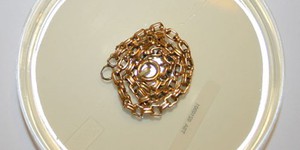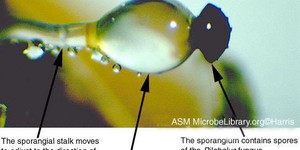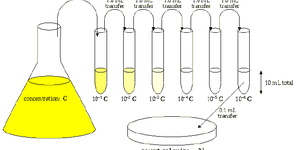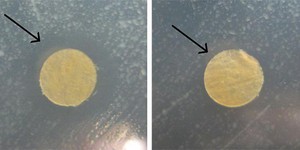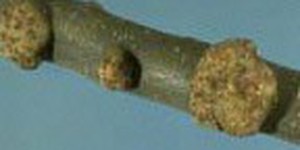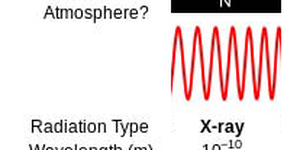High School, Microbiology Science Projects (21 results)
Microorganisms are all around us, with an amazing diversity of adaptations. They were the first life on Earth, and their relatively recent discovery in extreme environments—like hot springs, ocean vents, and polar ice—illustrates how tenaciously they've evolved and survived. Microbiology gives us insights into evolution, disease, and even the mechanisms of our own cells.
|
Select a resource
Sort by
|
Disinfectants are products that kill harmful bacteria that inhabit surfaces. Disinfectants can be in household and personal cleaning products. Which products work best? Compare different household cleaning products, like bleach or Lysol, to see which ones kill the most bacteria. Compare different brands of antibacterial hand soap or dish soap to see which brand is the most effective. How do hand sanitizers work? Compare rub-on hand sanitizers to see if they work better than alcohol, or compare…
Read more
Featured
Have you heard that garlic powder is supposed to inhibit the growth of bacteria? Which do you think would make a better disinfectant: a solution of garlic powder or a solution of bleach? This project shows you a straightforward way to compare the effectiveness of different disinfectants (or other antimicrobial agents), by measuring zones of inhibition on a culture plate.
Read more
Bacteria are powerful little creatures. They can dispose of contaminants, make us sick and did you know they can even generate electricity? In devices, called microbial fuel cells (MFC) they can extract electrons from their food sources such as organic materials and feed them into an electrical circuit to generate power. This way they can even turn plain soil into a source of energy! Does it matter though what kind of food the bacteria "eat"? Find out how bacteria grow in a microbial fuel cell…
Read more
Have you ever wondered if a piece of jewelry is real gold or if it's just some ordinary metal alloy? It turns out that some metals have a unique property; even in small amounts, they can be toxic to some organisms, including algae, molds, fungi, and bacteria, although it often takes many hours to see an effect. Can this phenomena, called the oligodynamic effect be used to tell whether or not the gold or silver in a piece of jewelry is real? Do bacteria react differently to pure, plated, and…
Read more
The Pilobolus fungus has an interesting way of making sure the next generation has a good start on life. At high speed, the fungus shoots a sac that contains spores toward a light source. Why toward a light source? Because that is where it is most likely to find an open area with grass. Once the spore is placed on grass, it is eaten by a cow or a horse, which is a critical step in its life cycle. The spore passes through the animal's digestive track and ends up in a pile of manure. For a fungal…
Read more
This is a project that illustrates the process of natural selection in action. You'll need access to a laboratory for working with the bacterial cultures used in this project.
Read more
How does your family thaw and cook meat? Have you ever wondered if it is the safest way? In this practical science project, you can find out and shed light on safe practices in the kitchen by investigating how many viable bacteria are present in samples of meat that have been thawed or cooked using different methods.
Read more
Have you ever heard that nanoparticles can kill bacteria? You may have even seen some consumer products advertise that they contain antibacterial nanoparticles. A nanometer is one billionth of a meter long. Nanoparticles are usually just a few nanometers in diameter — really, really tiny! So how can something that small kill bacteria which are approximately 700 - 1400 nanometers across? Are they really effective? In this science project you will grow some E. coli bacteria and…
Read more
Crown gall is a plant disease caused by the soil bacterium Agrobacterium tumefaciens. This project uses tomato plants to investigate whether garlic extract can prevent crown gall infection.
Read more
What do pneumonia, ear infections and strep throat have in common? When they are caused by bacteria (instead of viruses) they are treated by antibiotics. That sounds simple enough, right? You have probably had antibiotics several times in your life. You go to the doctor because you feel lousy, if he or she determines you have a bacterial infection you get a prescription for antibiotics, and within the first day or so you often start feeling much better. Unfortunately, there is a large…
Read more
Have you ever wondered how X-rays affect living organisms? You have probably had X-rays taken at the dentist's or
doctor's office. These X-rays are considered to be relatively safe, but every X-ray exposes a person to some radiation,
specifically electromagnetic radiation. Radiation is energy that travels through space as either waves or high speed
particles. Watch this video to learn more about electromagnetic radiation.
When the energy in X-rays encounters an object, it can…
Read more
|
Explore Our Science Videos
What are the Chances? – A Probability STEM activity
Magic Triangles - Fun Math Puzzles with Increasing Difficulty
Model How Herd Immunity Works





